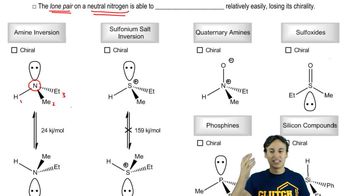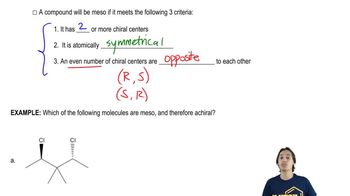For each pair, give the relationship between the two compounds. Making models will be helpful.
(h)
 Verified step by step guidance
Verified step by step guidance Verified video answer for a similar problem:
Verified video answer for a similar problem:



 1:41m
1:41mMaster Different atoms or different connectivity. with a bite sized video explanation from Johnny
Start learning